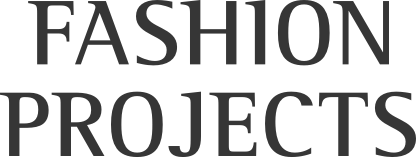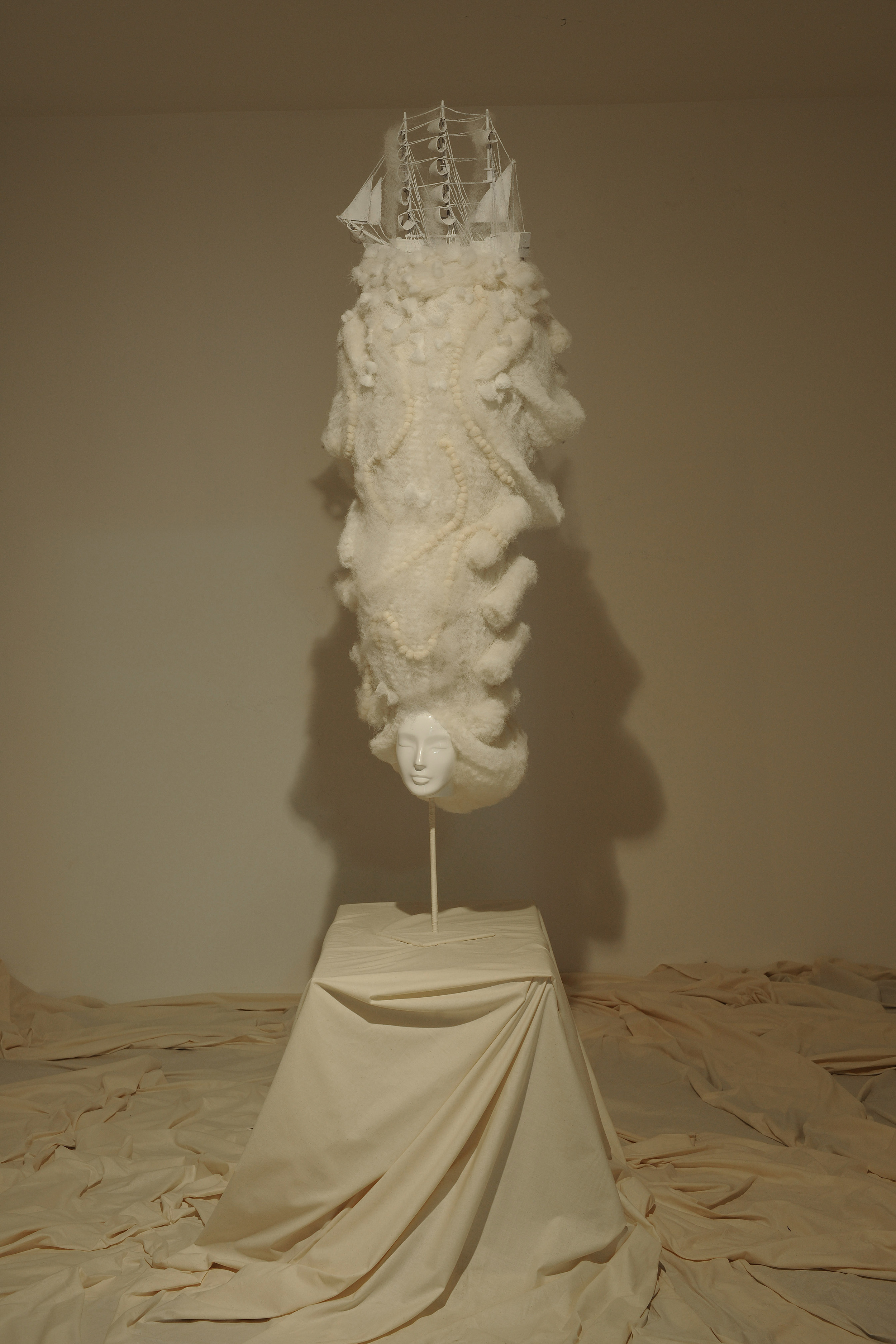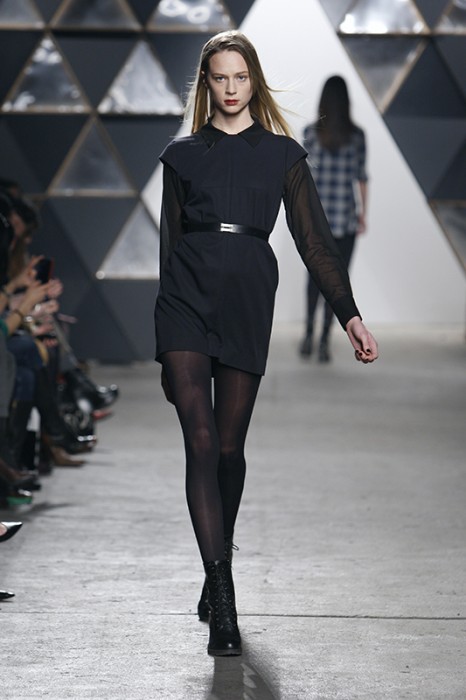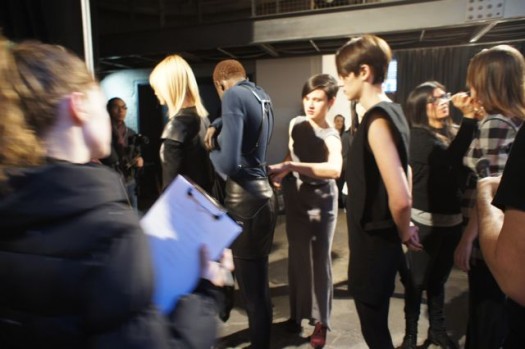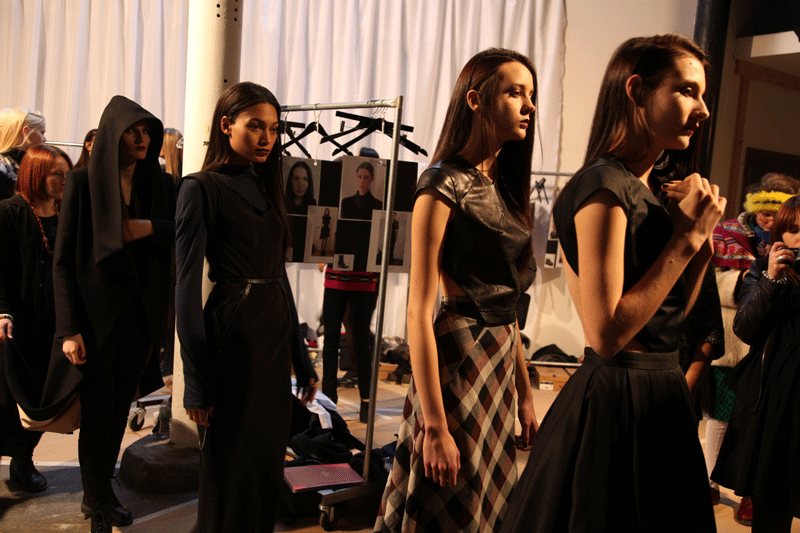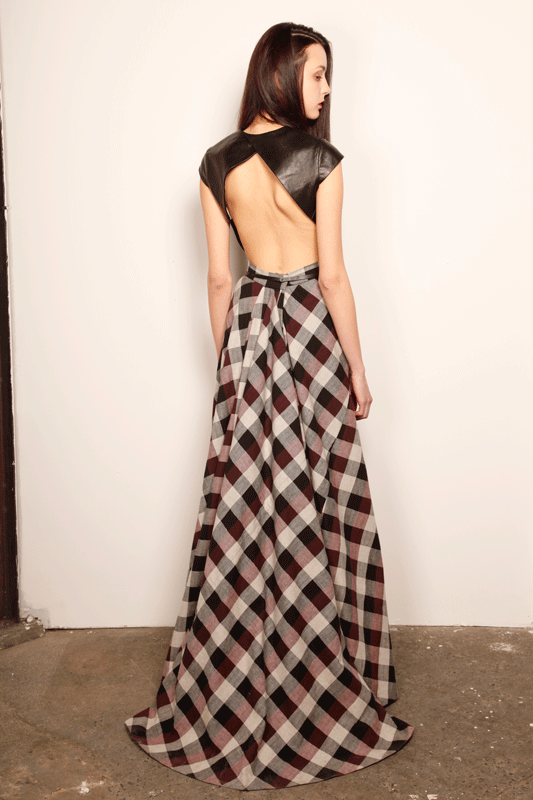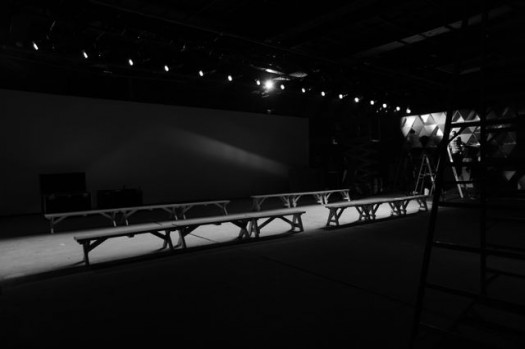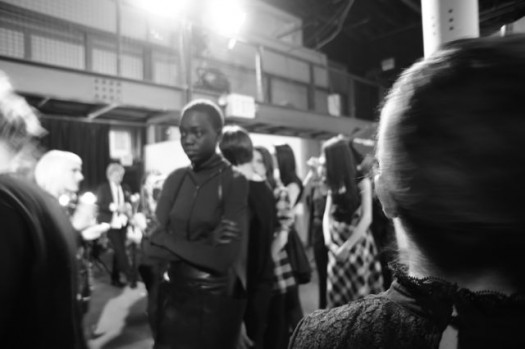Diana Vreeland After Diana Vreeland: The Discipline of Fashion Between Museum and Curating
/An incredibly exciting day of talks characterized the Italian symposium “Diana Vreeland After Diana Vreeland: The Discipline of Fashion Between Museum and Curating,” which was organized by Maria Luisa Frisa and Judith Clark at the Universita` Iuav di Venezia. Most of the morning talks touched upon the great relevance of Diana Vreeland for fashion curating—thus bringing a commentary to the wonderful exhibition “Diana Vreeland After Diana Vreeland,” curated by Clark and Frisa at Palazzo Fortuny in Venice.
One of the most directly relevant talks was by Harold Koda—curator-in-charge at the Costume Institute, the Metropolitan Museum of Art—who started his career assisting Diana Vreeland and spoke about how Vreeland brought a certain glamour and theatricalization to fashion exhibitions, often at the cost of historical accuracy. Koda, however, traced the ways curators (including himself) eventually engaged in the balancing act of retaining the dynamic quality of display and presentation brought forth by Vreeland’s approach while keeping historical accuracy in the way the garments were exhibited.
Another theme which transpired was the relation between the process of editing and curating, one which was obviously central to the proceedings, since Vreeland started consulting at the Costume Institute only after having been famously fired from Vogue, which she had glamorized in a similar vein.
The exhibition engaged in re-appropriating and re-interpreting Vreeland’s curatorial innovations. Frisa said the idea for the title came to her while visiting Sherry Levine’s exhibition in New York, as it is—as the title suggests—a very reflective exhibition: an exhibition about exhibition-making. Among Vreeland’s curatorial vocabulary that the exhibition decoded and recoded was her love for armor, and for horses—boldly presented at Palazzo Fortuny by a horse covered in toile. Another visually engaging re-appropriation of Vreeland’s vocabulary was her use of tights or elaborate wigs to cover the mannequins’ heads.
Among the most interesting point which Judith Clark made in relation to the relationship between exhibitions and magazines was the idea that in the context of a magazine you can play with proportion and dramatize a detail of a dress simply through close-up, whereas in the context of an exhibition you have to do it through lights or props—something Vreeland certainly mastered. Another idea which places on a continuum Vreeland’s work as consultant for the Costume Institute and of editor was the fact that meaning is not always best communicated through the gown itself—something which is certainly true for fashion photography.
Drawing a parallel between the Met’s Costume Institute and the Victoria and Albert Museum, Amy de la Hay brought an interesting and very little known example of an early take on dynamic and dramatic fashion exhibitions, which predated Vreeland: The 1969 “Fashion: An Anthology,” curated by Cecil Beaton. Once again equating magazines to exhibitions, de la Hay pointed out how fashion exhibitions became more dynamic and less static at the same time fashion photography did. Equally fascinating was Alexandra Palmer’s discussion of the early curators at the Costume Institute: Polaire Weissman, and later, Stella Blum. Blum was the curator while Vreeland consulted for the Institute, and Palmer discussed Blum’s difficult job of negotiating between Vreeland’s input and her own role as curator.
A particularly thought-provoking intervention was provided by a discussion IUAV Professor Mario Lupano had with Stefano Tonchi. The latter, who was editor of the New York Times’s T Magazine and currently edits W, equated processes of curation to those of editing. Both involved selection as a form of narrative. Among the various themes Tonchi discussed was the centrality of fashion to contemporary culture and particularly visual culture—its connection to the other arts, cinema, and design, which he explored with Frisa in his exhibition “Excess: Fashion and the Underground in the 1980s.” Another important point brought up by Tonchi was the analogy between theater and exhibitions, as both are involved in the creation of a spectacle. (Tonchi was speaking in Italian, thus using the word “spettacolo,” which does not have the same implication as the Debordian word “spectacle.”) Another important point, which is tied to the metaphors of exhibition as a form of theater is that of the audience—one which was surprisingly not discussed by curators. The idea of integrating other media in the process of curation, as well as of magazine making, is one that Tonchi introduced and was fortuitously fully unpacked by Kaat Debo (Director of the ModeMuseum in Antwerp) in her discussion of the various exhibitions done at the museum—the multi-media experimentations culminating with their collaboration with SHOWstudio on occasion of Walter Van Beirendonck’s exhibition.
The final panel, chaired by the tireless Marco Pecorari and Louise Wallenberg of the Centre for Fashion Studies in Stockholm (and including myself), discussed the idea of academic curation. Pecorari discussed the great divide which characterized academic and museum professionals up through the 1990s—one which, as the symposium pointed out, has been overcome. Gabriele Monti and Jenna Rossi-Camus, curatorial assistant to the Vreeland’s exhibition discussed their experience as emerging curators, while Marie Riegels Melchior brought some very interesting points on the differences and tensions between dress and fashion curation I was asked about the process of teaching curation, something which is integral to the new masters in Fashion Studies at Parsons, for which I teach. The masters offers courses in fashion curation and conservation—two intimately related areas—by Shannon Bell Price (Associate Research Curator at the Costume Institute) and Sarah Scaturro (Textile Conservator at Cooper-Hewitt). I also briefly touched on my interest in placing fashion in the context of greater visual and material culture. This interest is very much informed by Frisa’s and Tonchi’s work and their thought-provoking books and exhibitions, thus I am starting to wonder whether there might be something culturally specific in placing fashion in greater visual and material culture.
These ties between fashion, design and art are something I am hoping to bring up again in a forthcoming panel on Tuesday, April 17th at Parsons. Titled “Indisciplined Curation,” the panel focuses on curatorial practices that do not fit neatly within discreet categories of fashion, art, and design. It includes Harold Koda (Curator-in-Charge of the Costume Institute at the Metropolitan Museum of Art), Sarah Lawrence (an academic curator and dean of the School of Art and Design History and Theory at Parsons the New School for Design), and Sabrina Gschwandtner (a New York-based artist, writer and curator).
All Photos: Francesco de Luca
fig. 1 Exhibition View
fig. 2 DIANA VREELAND’S ARCHIVE. Collection of Michael H. Berkowitz, Fondazione Ottavio e Rosita Missoni Museo di Palazzo Mocenigo - Centro Studi di Storia del Tessuto e del Costume, Venezia, The Diana Vreeland Estate, Maria Luisa Frisa, Kenneth Jay Lane, Katell le Bourhis Collection. Luigino Rossi
fig. 3 Semi-formal robe, China, first half of the XIX secolo. Collezione privata Cecilia Matteucci Lavarini Peacock (Pavo cristatus). Collezione Museo di Storia Naturale di Venezia
fig. 4 Henri Matisse, Costumes for the Ballets Russes de Le Chant du Rossignol di Igor Stravinsky, 1920. Martin Kamer, Svizzera
fg. 5 THE EIGHTEENTH-CENTURY WOMAN. Wig, Angelo Seminara: a reference to Diana Vreeland's Exhibition, The Eighteenth-Century Woman (16 dicembre 1981-5 settembre 1982)
